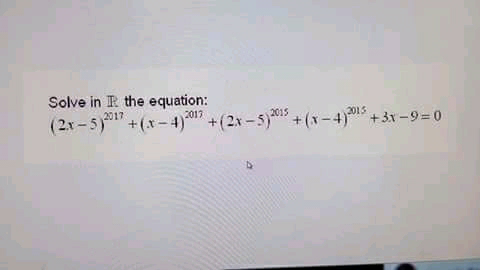
AlgebraQuestion and Answers: Page 324
Question Number 50924 Answers: 1 Comments: 0
Question Number 49647 Answers: 1 Comments: 3
Question Number 49642 Answers: 1 Comments: 0
Question Number 49604 Answers: 2 Comments: 0
Question Number 49570 Answers: 1 Comments: 0
Question Number 49555 Answers: 0 Comments: 0
$$\mathrm{Find}\:\mathrm{4}\:\: \\ $$$$\mathrm{plz}\:\mathrm{help}\:\mathrm{me}\:\mathrm{sir} \\ $$
Question Number 49331 Answers: 1 Comments: 2
Question Number 49272 Answers: 2 Comments: 0
Question Number 49279 Answers: 2 Comments: 1

Question Number 49256 Answers: 2 Comments: 0

Question Number 49253 Answers: 2 Comments: 0

Question Number 49251 Answers: 5 Comments: 1

Question Number 49248 Answers: 1 Comments: 0
Question Number 49244 Answers: 1 Comments: 0
Question Number 49246 Answers: 0 Comments: 0
Question Number 49245 Answers: 0 Comments: 0
Question Number 49242 Answers: 0 Comments: 0
Question Number 49241 Answers: 0 Comments: 0
Question Number 49249 Answers: 0 Comments: 0
Question Number 49238 Answers: 0 Comments: 3
Question Number 49237 Answers: 0 Comments: 0
Question Number 49235 Answers: 0 Comments: 0
Question Number 49229 Answers: 0 Comments: 4
$$\boldsymbol{{x}}^{\mathrm{2}} −\boldsymbol{{y}}^{\mathrm{2}} \\ $$
Question Number 49220 Answers: 0 Comments: 2
$$\left(\mathrm{1}+\mathrm{x}−\mathrm{2x}^{\mathrm{2}} \:\right)^{\mathrm{8}} =? \\ $$
Question Number 49202 Answers: 2 Comments: 4
Question Number 49200 Answers: 2 Comments: 1
Pg 319 Pg 320 Pg 321 Pg 322 Pg 323 Pg 324 Pg 325 Pg 326 Pg 327 Pg 328
